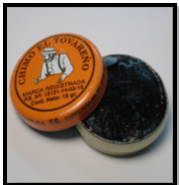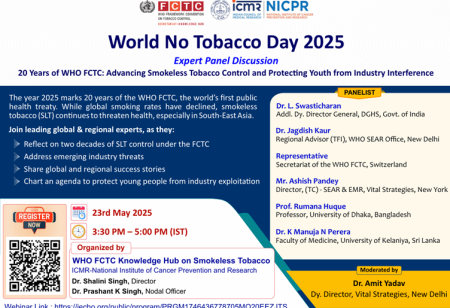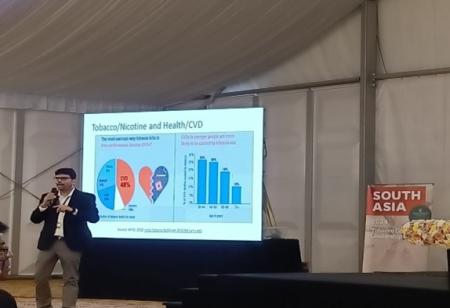
Smokeless tobacco (SLT) products - 10 January 2018

PAAN / BETEL QUID WITH TOBACCO | KHAINI | CHEWING TOBACCO PLAIN / TAMBAKOO | GUTHKA | ZARDA / VIZAPATTA| LOOSE LEAF / SADA PATA / CHADHA / TOBACCO LEAF | GUL | KHARRA | KIWAM | MISHRI | MAWA | DOHRA | GUDAKHU | NASWAR / NASS / NISWAR / NASVAY | TAPKEER / TAPKIR / DRY SNUFF / BAJAR | CREAMY SNUFF | TUIBUR / TOBACCO WATER / HIDAKPHU | TOOMBAK / SAUTE / SUTE / AMMARI / SAOOD | MAINPURI / KAPOORI | LAL DANTAMANJAN / RED TOOTH POWDER / RED TOOTH PASTE | DISSOLVABLE TOBACCO | SNUS | MOIST SNUFF / DIP | RAPÉ | CHIMÓ | TOMBOL | TWIST / CHEW / CHAW / CHEWING TOBACCO | SHAMMAH / EL-SHAMA / CHEMMA / AL-SHAMMAH | PLUG / SPIT TOBACCO / CHEW / CHAW | IQMIK / BLACK BULL/ DEDIGUSS | GHANA TRADITIONAL SNUFF / TAWA | NEFFA / TENFEHA / NUFHA | SNUIF | TAABA
Paan / betel quid with tobacco:
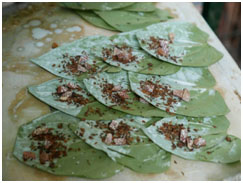
- Ingredients – Betel leaf, areca nut, slaked lime, catechu and other flavouring agents such as menthol, camphor, sugar, rosewater, aniseed, cardamom, clove, mint, spices.
- Mode of Use – Placed in the mouth and chewed.
- Used in – Used in Central, East, South and South-East Asia, in the western pacific and in the migrant communities from these regions. Used in all the Indian states.
- Prevalence – More common in the rural areas, women in the older age.
Khaini: 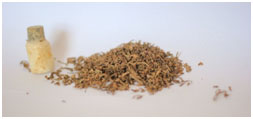
- Ingredients – Sun-dried or fermented coarsely cut tobacco leaves mixed with slaked lime.
- Mode of Use – Placed in the mouth between the gums and cheeks and sucked slowly for 10 – 15 minutes. Occasionally, left overnight in the mouth.
- Used in – India, Nepal, Bangladesh. In India – Delhi, Jharkhand, Bihar, Chhattisgarh, Nagaland, Mizoram, Manipur, Maharashtra, Madhya Pradesh, Uttar Pradesh, Arunachal Pradesh, Sikkim and Assam.
- Prevalence -Most popular Smokeless Tobacco product in India. More common in men than women. In Mizoram, Khaini use is higher among women.
Chewing tobacco plain / tambakoo: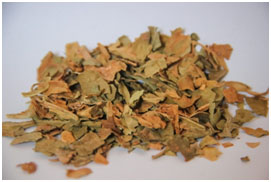
- Ingredients – Finely or coarsely shredded tobacco leaves.
- Mode of Use – Used for chewing or sucking.
- Used in – Used all over India.
Guthka: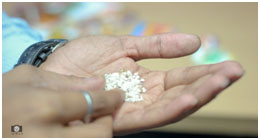
- Ingredients – Areca nut, slaked lime, catechu and sun-dried, roasted, finely chopped tobacco with flavorings and sweeteners.
- Mode of Use – Held in the mouth, sucked and chewed.
- Used in – India and Indians staying in Canada, United Kingdom and United States. In India, use is common in all states.
- Prevalence – More common among men in most of the states in India. In Mizoram, Arunachal Pradesh and Nagaland it is used more common among women than men.
Zarda / vizapatta: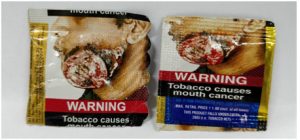
- Ingredients –Flavoured chewing tobacco flakes mixed with aromatic spices, menthol, herbs, fragrances, saffron, raw kiwam, silver flakes and sandalwood oil. Lime is provided separately by the manufactures. When flavoured with saffron it is called “ZafraniZarda”.
- Mode of Use –Used in betel quid, chewed alone or mixed with lime or areca nut.
- Used in – India, Bangladesh, Pakistan, Nepal and Myanmar
Prevalence –Used by men and women of middle and upper socioeconomic groups.
Loose leaf / sada pata / chadha / tobacco leaf:

- Ingredients –Air cured loose tobacco leaf used for chewing as well as for smoking.
- Mode of Use –Either chewed or held in the mouth. Added as an ingredient in betel quid.
- Used in – India, Bangladesh, Bhutan and Myanmar.
- Prevalence –Used among the low-socioeconomic people in rural and urban population.
Gul:
- Ingredients – It is a pyrolysed powdered tobacco product with ash of tendu leaves, marketed in small tin cans or sachets as a dental care product.
- Mode of Use – Applied on teeth and gums as dentifrice.
- Used in – India and Bangladesh. In India – Uttar Pradesh, Uttaranchal, Jharkhand, Bihar and Orissa as well as in the eight North-Eastern states of India.
- Prevalence – More common in women than men.
Kharra:
- Ingredients –Combination of tobacco, areca nut, lime, catechu with additional ingredients.
- Mode of Use –Held in the mouth, sucked and chewed.
- Used in–Maharashtra.
- Prevalence –Commonly used among the adolescent males in Wardha district and Mumbai
Kiwam: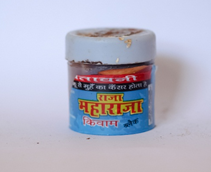
- Ingredients –Thick paste prepared from tobacco leaf extract, spices (e.g., saffron, cardamom, aniseed) and additives such as musk.
- Mode of Use –Placed in the mouth and chewed or used as an optional ingredient in betel quid.
- Used in – South Asia, mainly in India, Pakistan and Bangladesh.
- Prevalence –More common among the upper socioeconomic groups.
Mishri: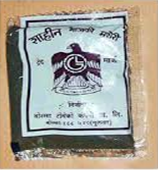
- Ingredients –It is roasted and powdered tobacco.
- Mode of Use –Applied to the gums using a finger, used as a dentifrice.
- Used in –Gujarat and adjoining areas in Maharashtra.
- Prevalence –Morecommon among women and low socioeconomic group.
Mawa:
- Ingredients –It is a mixture of thin shavings of areca nut with some tobacco flakes and slaked lime.
- Mode of Use –Placed in the mouth and chewed for 10 – 20 minutes.
- Used in –Gujarat and adjoining areas in Maharashtra.
- Prevalence –Common among young men.
Dhora:
- Ingredients – Wet mixture of tobacco, slaked lime, areca nut and other ingredients like catechu (Kattha), peppermint and cardamom.
- Mode of Use – Chewed and sucked.
- Used in – Allahabad, Janupur and Pratapgarh districts of Uttar Pradesh.
- Prevalence – Common among men.
Gudakhu: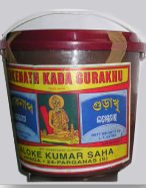
- Ingredients – Paste like tobacco preparation made using fine tobacco leaf dust, sheera (molasses), lime and gerumati (red soil).
- Mode of Use – Rubbed over the teeth and gums with fingertip for 10 – 15 minutes. Some swallow the exact while others spit it out.
- Used in – Bihar, Chattisgarh, Orissa, West Bengal, Uttar Pradesh and Uttaranchal.
- Prevalence – Used predominantly by rural women.
Naswar / nass / niswar / nasvay: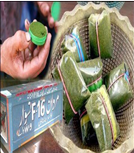
- Ingredients –Nass:Tobacco, ash, cotton or sesame oil, water and sometimes lime or gum.
Naswar, Niswar, Nasway:Tobacco, slaked lime, ash, oil or butter, indigo or other coloring agents, water and sometimes flavorings such as cardamom and menthol.
- Mode of Use –rolled into a ball and placed under the tongue or in the cheek. Held in the mouth and sucked for 10 to 15 minutes.
- Used in –Afghanistan, Pakistan, Iran, United Arab Emirates, South Africa, Turkmenistan, Kyrgyzstan, Uzbekistan.
- Prevalence –Used predominantly by men between the ages of 15 – 60 years.
Tapkeer / tapkir / dry snuff / bajar: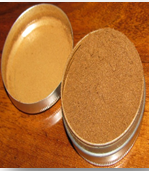
- Ingredients –Dry powdered tobacco available as unscented plain, mentholised and scented varieties. Manufacturers claim to use perfumes extracted from natural herbs and flowers.
- Mode of Use –Oral or nasal use.
- Used in – United States, Europe, India. In India – Gujarat, Maharashtra, Goa and Eastern part of India.
- Prevalence –More commonly used by adolescent boys of Wardha district in Maharashtra and among older women in rural areas in the Bhavnagar district of Gujarat.
Creamy snuff:
- Ingredients – Commercially manufactured tobacco based paste consisting of finely grounded tobacco mixed with clove oil, glycerin, spearmint, menthol, camphor, salts, water and other hydrating agents.
- Mode of Use – Rubbed on the gums and teeth with finger or toothbrush for 3 to 4 minutes.
- Used in – Used all over India.
- Prevalence – More commonly used in children among 13-15 years of age.
Tuibur / tobacco water / hidakphu:
- Ingredients – It is tobacco smoke-infused water. Stored and sold in bottles.
- Mode of Use – Gargle or kept in the mouth for 5 – 10 minutes, then spit out.
- Used in – India – North Eastern states of Mizoram and Manipur.
Prevalence –More commonly used by women. It is integrated with the social and cultural rituals.
Toombak / saute / sute / ammari / saood:
- Ingredients – Tobacco, baking soda and water.
- Mode of Use – Oral or nasal use.
- Used in – Sudan and Chad.
- Prevalence –Used by adult Sudanese men in rural areas.
Very high concentration of Tobacco Specific Nitrosamines (TNSAs)are present in toombak.
Mainpuri / kapoori:
- Ingredients – Mixture of finely cut betel nut and small pieces of tobacco leaves treated in slaked lime and flavoring agents such as powdered cloves, cardamom, Kewara (extract from the fragrant flower of Pandanus odoratissimus) and sandalwood powder. Catechu is sometimes used.
- Mode of Use – Held in mouth, chewed and sucked.
- Used in – Mainpuri district of Uttar Pradesh, Pakistan.
- Prevalence –Common among people aged 35 years and older.
Lal dantamanjan / red tooth powder / red tooth paste:
- Ingredients –Fine red tobacco powder, herbs, and flavorings.Additionally ginger, pepper and camphor may be used.
- Mode of Use –Used to clean the teeth.
- Used in –India – Bihar, Uttar Pradesh, Uttaranchal, Orissa, Mizoram, Nagaland, Arunachal Pradesh, Assam, Meghalaya, Tripura, Goa, Maharashtra, Manipur and Sikkim.
- Prevalence –Used by men and women of all age group.
Dissovlable tobacco:
- Ingredients –Tobacco, humectants, preservatives, flavours.
- Mode of Use –Used orally, held in the mouth and it is dissolved.
- Used in –United States.
Prevalence –It is new to the market and available as tablets, strips, sticks
Snus:
- Ingredients – Tobacco, moisturizers, sodium carbonate, salt, sweeteners, flavouring.
- Mode of Use – Orally held in the mouth for about 30 minutes.
- Used in – Sweden, Norway, Iceland, Finland, Denmark, United States, Canada, Brazil, South Africa.
- Prevalence – More common among males and adolescents.
Moist snuff / DIP :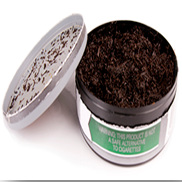
- Ingredients – Tobacco, flavoring, inorganic salts, humectants.
- Mode of Use – Usually held in the mouth for about 30 minutes.
- Used in – United States, Canada, Mexico, South Africa.
- Prevalence – Commonly used by men.
Rapé: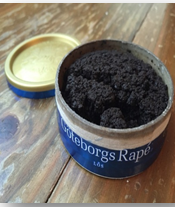
- Ingredients – Dried tobacco leaf, flavorings such as tonka bean, clove, cinnamom powder, camphor and ashes of selected trees.
- Mode of Use – Inhaled through the nose.
- Used in – Brazil.
- Prevalence – Used in rural areas and small towns by the aboriginals in the American rainforest. It has its cultural significance.
- Ingredients – Tobacco leaf, baking soda, brown sugar, ashes from the mamon tree, vanilla and anisette flavoring.
- Mode of Use – Placed between the lip or cheek and gum and left for some time, usually 30 minutes.
- Used in – Venezuela, Colombia.
- Prevalence – More common among the men than women.
Tombol:
- Ingredients – Tobacco, areca nut, noura, slaked lime, catechu, tombol leaf, powdered khat and other flavoring ingredients.
- Mode of Use – Orally held in the mouth.
- Used in – Yemen.
Twist / chew / chaw / chewing tobacco: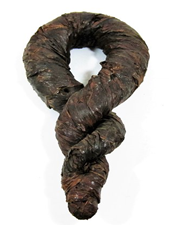
- Ingredients – Tobacco, tobacco leaf extract and sometimes sweetener or flavorings.
- Mode of Use – Orally chewed or held in the mouth.
- Used in – United States.
- Prevalence – Use has reduced over the past century.
Shammah / el-shama / chemma / al-shammah: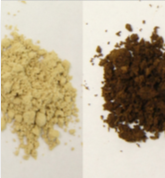
- Ingredients – Tobacco, slaked lime, ash, black pepper, oil, flavouring, bombosa (sodium carbonate).
- Mode of Use – Orally chewed or held in the mouth.
- Used in – Saudi Arabia, Yemen, Algeria.
- Prevalence – Used by both males and females. Its use increases with age in rural and urban areas.
Plug / spit tobacco / chew / chaw:
- Ingredients – Burley and bright tobacco or cigar tobacco leaves, licorice and sugar.
- Mode of Use – Chewed or held between the cheek and gum.
- Used in – United States.
- Prevalence – More commonly used by men in rural areas. Its use has reduced over the past century.
Iqmik / black bull / dediguss: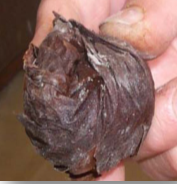
- Ingredients – Tobacco, tree fungus ash (also known as punk, araq, or buluq ash) or other ash derived from burning driftwood, alder bush or willow bush.
- Mode of Use – Users may pre-chew the iqmik and placed it in a small box for later use by the maker or to share with others.
- Used in – United States (Alaska).
- Prevalence – Used by Alaska natives, including youth of all ages, pregnant women in western Alaska. It is believed to relieve babies teething pain.
Ghana traditional snuff / tawa:
- Ingredients – Dried tobacco leaf with some chemicals such as saltpeter (potassium nitrate) and grinding it into a fine powder.
- Mode of Use – Held in the mouth or used nasally to induce sneezing to lighten the head.
- Used in – Africa – Ghana.
- Prevalence – More commonly used among the youth.
Neffa / tenfeha / nufha:
- Ingredients – Type of dry snuff.
- Mode of Use – Held in the mouth or used nasally to induce sneezing to lighten the head.
- Used in – Northern Africa – Tunisia, Libya and Algeria, Mororcco and Algeria.
- Prevalence – More commonly used by men.
Snuif:
- Sunif is the South African word for ‘snuff’, is not a special type of smokeless tobacco product. It is commercially and locally produced.
- Ingredients – Hand-mixed finely ground sun-dried tobacco leaf with ash from local plants.
- Mode of Use – Held in the mouth or used nasally.
- Used in – Africa.
- Prevalence – More commonly used by women in rural areas.
Taaba:
- Ingredients – Dry fermented tobacco mixed with natron / atron ( a naturally occurring mixture of sodium bicarbonate and sodium chloride).
- Mode of Use – Held in the mouth or used nasally.
- Used in – Western African countries – Northern Nigeria, Cameroon, Senegal, Uganda and Chad.
- Prevalence – More commonly used by men.
Smokeless tobacco products are either chewed, snuffed orally, nasally, rubbed on teeth and gums gargled or drunk. Usage varies in various geographic locality, ingredient availability, cultural/societal norms, and personal preferences.
Smokeless tobacco (SLT) products range in complexity from simple cured tobacco to elaborate products with numerous chemical ingredients and, in some cases includes non-tobacco plant material that may affect the attractiveness, addictiveness, and toxicity of the products. For certain products, preparation, ingredient selection (including non-tobacco plant materials) is specific.
In terms of production and preparation, Smokeless Tobacco (SLT) can be broadly divided into premade and custom-made products . Premade Smokeless Tobacco (SLT) products, which are made for sale and generally consumed as purchased (i.e., “ready-to-use”), can be subdivided into:
- Commercial products (i.e., moist snuff, snus, khaini) that are made in traditional manufacturing settings such as factories or production facilities.
- Cottage products (toombak, nasway, mainpuri, mawa) that are made in non-traditional production environments (market stalls, shops, houses, etc.) and often sold in non-commercial packaging (paper or plastic bags; wrapped in paper).

